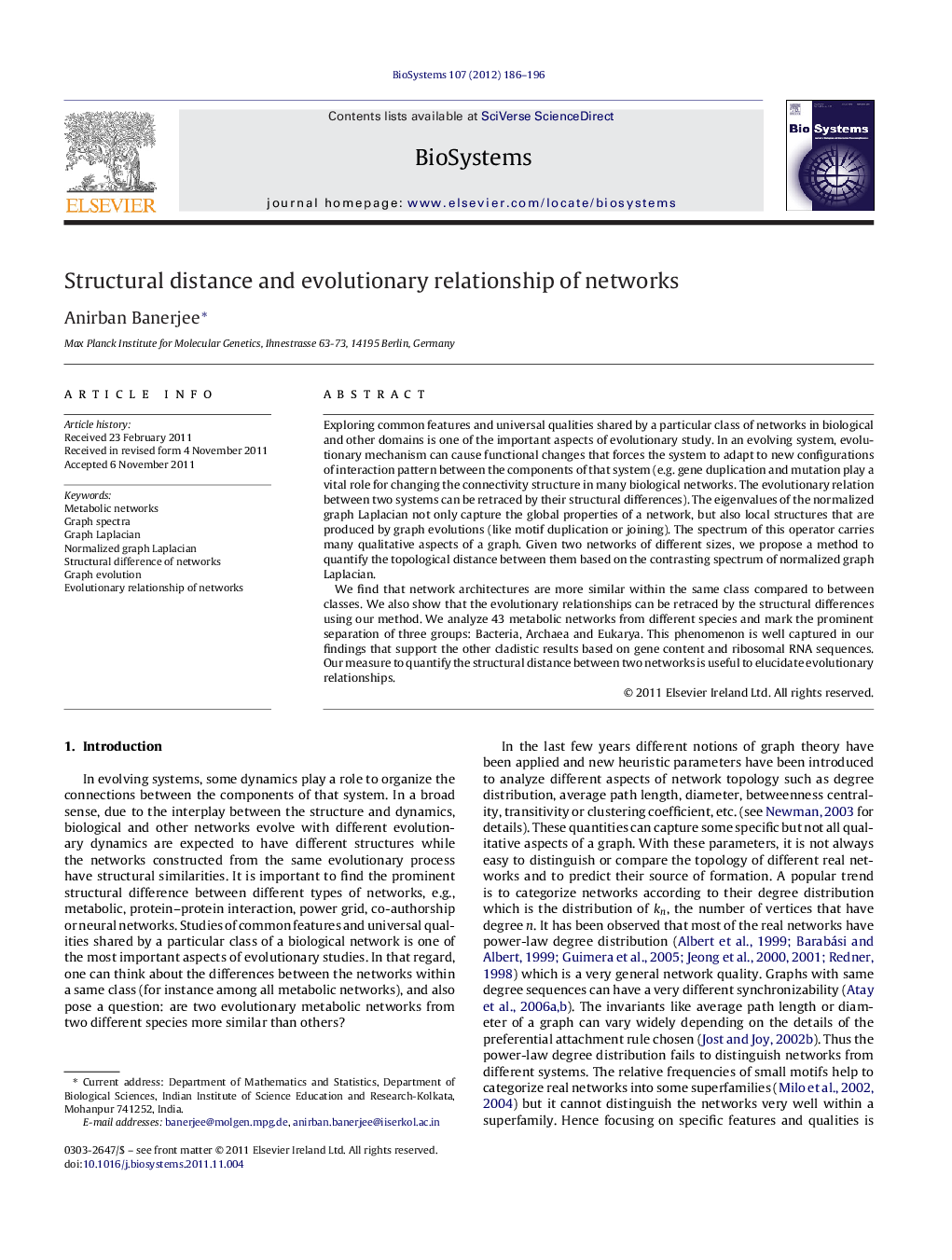| کد مقاله | کد نشریه | سال انتشار | مقاله انگلیسی | نسخه تمام متن |
|---|---|---|---|---|
| 2076197 | 1079426 | 2012 | 11 صفحه PDF | دانلود رایگان |

Exploring common features and universal qualities shared by a particular class of networks in biological and other domains is one of the important aspects of evolutionary study. In an evolving system, evolutionary mechanism can cause functional changes that forces the system to adapt to new configurations of interaction pattern between the components of that system (e.g. gene duplication and mutation play a vital role for changing the connectivity structure in many biological networks. The evolutionary relation between two systems can be retraced by their structural differences). The eigenvalues of the normalized graph Laplacian not only capture the global properties of a network, but also local structures that are produced by graph evolutions (like motif duplication or joining). The spectrum of this operator carries many qualitative aspects of a graph. Given two networks of different sizes, we propose a method to quantify the topological distance between them based on the contrasting spectrum of normalized graph Laplacian.We find that network architectures are more similar within the same class compared to between classes. We also show that the evolutionary relationships can be retraced by the structural differences using our method. We analyze 43 metabolic networks from different species and mark the prominent separation of three groups: Bacteria, Archaea and Eukarya. This phenomenon is well captured in our findings that support the other cladistic results based on gene content and ribosomal RNA sequences. Our measure to quantify the structural distance between two networks is useful to elucidate evolutionary relationships.
Journal: Biosystems - Volume 107, Issue 3, March 2012, Pages 186–196